图像语义分割简介








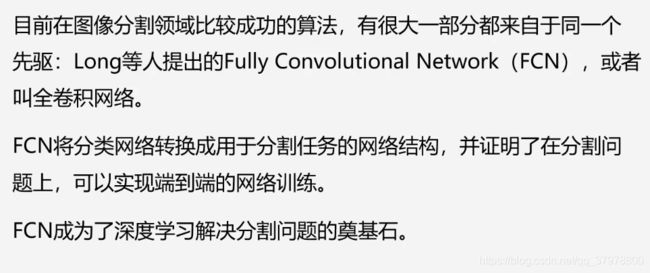

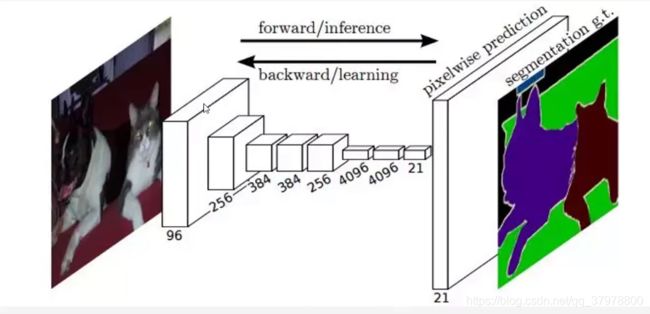
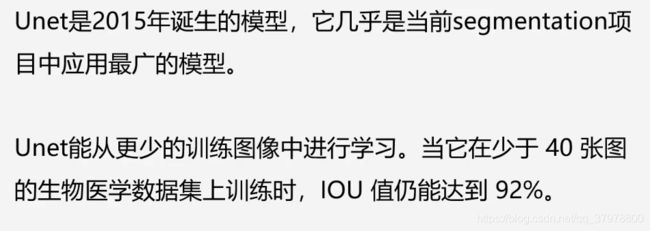

图像语义分割网络结构-FCN



上采样




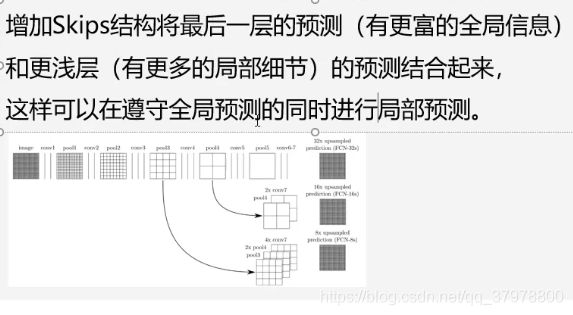


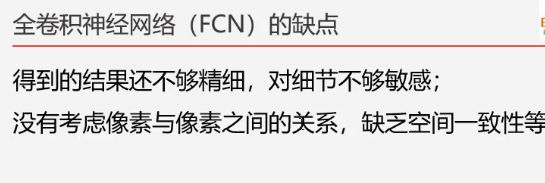
代码实现
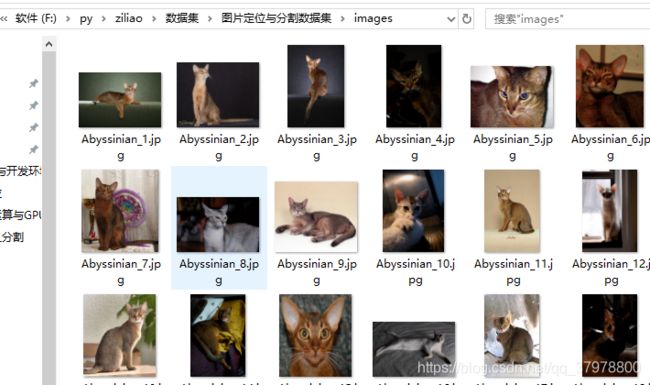
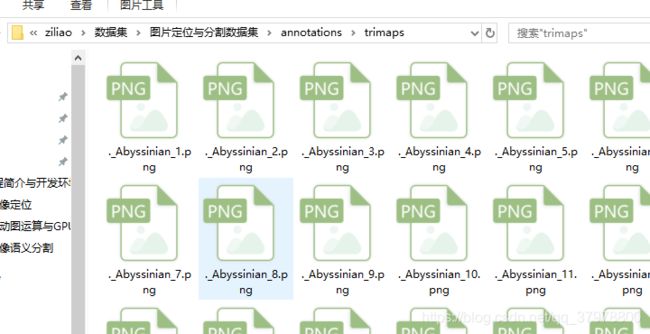
import tensorflow as tf
import matplotlib.pyplot as plt
%matplotlib inline
import numpy as np
import glob
import os
gpus = tf.config.experimental.list_physical_devices(device_type='GPU')
for gpu in gpus:
tf.config.experimental.set_memory_growth(gpu,True)
gpu_ok = tf.test.is_gpu_available()
print("tf version:", tf.__version__)
print("use GPU", gpu_ok)

例子
os.listdir("F:/py/ziliao/数据集/图片定位与分割数据集/annotations/trimaps")[-5:]

img = tf.io.read_file(r"F:/py/ziliao/数据集/图片定位与分割数据集/annotations/trimaps/Abyssinian_2.png")
img2 = tf.io.read_file(r"F:/py/ziliao/数据集/图片定位与分割数据集/images/Abyssinian_2.jpg")
img = tf.image.decode_png(img)
img2 = tf.image.decode_jpeg(img2)
img.shape

img = tf.squeeze(img)
img.shape

plt.imshow(img)

img.numpy()

np.unique(img.numpy())

plt.imshow(img2)

完整代码
images = glob.glob(r"F:/py/ziliao/数据集/图片定位与分割数据集/images/*.jpg")

anno = glob.glob(r"F:/py/ziliao/数据集/图片定位与分割数据集/annotations/trimaps/*.png")

np.random.seed(2020)
index = np.random.permutation(len(images))
images = np.array(images)[index]
anno = np.array(anno)[index]

dataset = tf.data.Dataset.from_tensor_slices((images,anno))

test_count = int(len(images)*0.2)
train_count = len(images)-test_count
test_count,train_count

data_train =dataset.skip(test_count)
data_test = dataset.take(test_count)
def read_jpg(path):
img = tf.io.read_file(path)
img = tf.image.decode_jpeg(img,channels=3)
return img
def read_png(path):
img = tf.io.read_file(path)
img = tf.image.decode_png(img,channels=1)
return img
def normal_img(input_images,input_anno):
input_images = tf.cast(input_images,tf.float32)
input_images/127.5 - 1
input_anno -= 1
return input_images,input_anno
def load_images(input_images_path,input_anno_path):
input_image = read_jpg(input_images_path)
input_anno = read_png(input_anno_path)
input_image = tf.image.resize(input_image,(224,224))
input_anno = tf.image.resize(input_anno,(224,224))
return normal_img(input_image,input_anno)
data_train = data_train.map(load_images,
num_parallel_calls=tf.data.experimental.AUTOTUNE)
data_test = data_test.map(load_images,
num_parallel_calls=tf.data.experimental.AUTOTUNE)
BATCH_SIZE = 16
data_train = data_train.repeat().shuffle(5912).batch(BATCH_SIZE)
data_test = data_test.batch(BATCH_SIZE)

for img,anno in data_train.take(1):
plt.subplot(1,2,1)
plt.imshow(tf.keras.preprocessing.image.array_to_img(img[0]))
plt.subplot(1,2,2)
plt.imshow(tf.keras.preprocessing.image.array_to_img(anno[0]))

conv_base = tf.keras.applications.VGG16(weights="imagenet",
input_shape=(224,224,3),
include_top = False)
conv_base.summary()



conv_base.get_layer("block5_conv3").output
sub_model = tf.keras.models.Model(inputs = conv_base.input,
outputs = conv_base.get_layer("block5_conv3").output
)

FCN跳阶-获取模型中间层的输出
layer_names = [
"block5_conv3",
"block4_conv3",
"block3_conv3",
"block5_pool"
]
layers_output = [conv_base.get_layer(layer_name).output for layer_name in layer_names]

multi_out_model = tf.keras.models.Model(inputs = conv_base.input,
outputs = layers_output
)
multi_out_model.trainable = False
inputs = tf.keras.layers.Input(shape=(224,224,3))
out_block5_conv3,out_block4_conv3,out_block3_conv3,out = multi_out_model(inputs)

反卷积 上采样
x1 = tf.keras.layers.Conv2DTranspose(512,3,
strides=2,
padding="same",
activation="relu")(out)

x1 = tf.keras.layers.Conv2D(512,3,
padding="same",
activation="relu")(x1)

x2 = tf.add(x1,out_block5_conv3)
x2.shape

x2 = tf.keras.layers.Conv2DTranspose(512,3,strides=2,padding="same",activation="relu")(x2)
x2 = tf.keras.layers.Conv2D(512,3,padding="same",activation="relu")(x2)

x3 = tf.add(x2,out_block4_conv3)
x3.shape
x3 = tf.keras.layers.Conv2DTranspose(256,3,strides=2,padding="same",activation="relu")(x3)
x3 = tf.keras.layers.Conv2D(256,3,padding="same",activation="relu")(x3)

x4 = tf.add(x3,out_block3_conv3)
x4.shape

x5 = tf.keras.layers.Conv2DTranspose(128,3,strides=2,padding="same",activation="relu")(x4)
x5 = tf.keras.layers.Conv2D(128,3,padding="same",activation="relu")(x5)

prediction = tf.keras.layers.Conv2DTranspose(3,
3,
strides=2,
padding="same",
activation="softmax")(x5)

model = tf.keras.models.Model(
inputs=inputs,
outputs=prediction
)

model.compile(
optimizer="adam",
loss = "sparse_categorical_crossentropy",
metrics=["acc"]
)
history = model.fit(data_train,
epochs=5,
steps_per_epoch=train_count//BATCH_SIZE,
validation_data=data_test,
validation_steps=test_count//BATCH_SIZE,
)

loss = history.history["loss"]
val_loss = history.history["val_loss"]
epochs = range(15)
plt.figure()
plt.plot(epochs,loss,"r",label="Trainning loss")
plt.plot(epochs,val_loss,"bo",label="Validation loss")
plt.title("Training and Validation Loss")
plt.xlabel("epochs")
plt.ylabel("Loss Value")
plt.legend()
plt.show()

num = 3
for image, mask in data_test.take(1):
pred_mask = model.predict(image)
pred_mask = tf.argmax(pred_mask, axis=-1)
pred_mask = pred_mask[..., tf.newaxis]
plt.figure(figsize=(10, 10))
for i in range(num):
plt.subplot(num, 3, i*num+1)
plt.imshow(tf.keras.preprocessing.image.array_to_img(image[i]))
plt.subplot(num, 3, i*num+2)
plt.imshow(tf.keras.preprocessing.image.array_to_img(mask[i]))
plt.subplot(num, 3, i*num+3)
plt.imshow(tf.keras.preprocessing.image.array_to_img(pred_mask[i]))

![]()
![]()
![]()




















































